Ethnobotanist Richard Evans Schultes, one of the most important plant explorers of the 20th century, served as a key inspiration in a 2016 film called Embrace of the Serpent. In December 1941, Schultes entered the Amazon to study how Indigenous peoples used plants for medicinal, ritual, and practical purposes. After nearly a decade of fieldwork, he made significant discoveries about the sacred hallucinogen ayahuasca. In total, Schultes would collect more than 24,000 species of plants including some 300 species new to Western science.
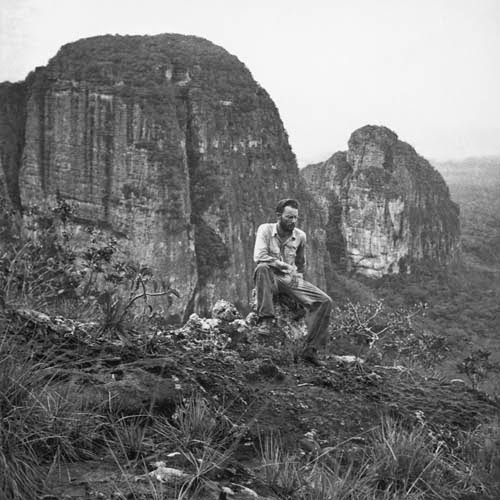

An Ethnobotanical Perspective on Ayahuasca
By Richard Evans Schultes, Ph.D. F.L.S., Published in Choque Chinchay
One of the weirdest of the hallucinogens is the drink of the western Amazon known as ayahuasca, caapi, natema or yagé. Although not nearly so popularly known as peyote or, nowadays, as the sacred mushrooms, this narcotic has nonetheless had an undue share of sensational articles that have played fancifully with unfounded claims, especially with regard to its “telepathic” powers.
Notwithstanding its extraordinarily bizarre psychotomimetic effects, this narcotic preparation was hidden from European eyes until just a little over a century ago. The earliest report of ayahuasca appears to have been that of Villavicencio in his geography of Ecuador, written in 1858.
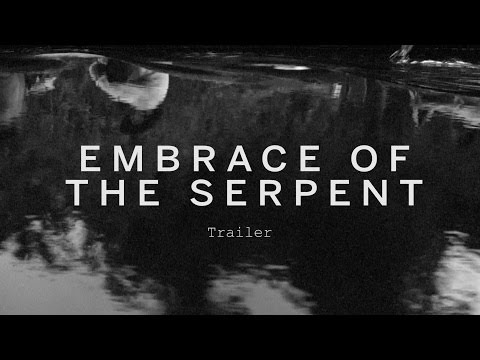
Watch this video on YouTube
Embrace of the Serpent trailer. Tracking two parallel odysseys through the Amazon three decades apart, this visionary adventure epic from Colombian director Ciro Guerra offers a heart-rending depiction of colonialism laying waste to indigenous culture.
The source of the drug, he wrote, was a vine used by the Zaparos, Angateros, Mazanes and other tribes of the Rio Napo basin: “to foresee and to answer accurately in difficult cases, be it to reply opportunely to ambassadors from other tribes in a question of war; to decipher plans of the enemy through the medium of this magic drink and take proper steps for attack and defense; to ascertain, when a relative is sick, what sorcerer has put a curse; to carry out a friendly visit to other tribes; to welcome foreign travelers or, at last, to make sure of the love of their womenfolk.”
“In this moment, it is not possible for me to know, dear reader, if the infinite jungle has started on me the process that has taken many others that have ventured into these lands, to complete and irremediable insanity.
“If this is the case, I can only apologize and ask for your understanding, for the display I witnessed in those enchanted hours was such, that I find it impossible to describe in a language that allows others to understand its beauty and splendor; all I know is that, like all those who have shed the thick veil that blinded them, when I came back to my senses, I had become another man.” — Theodor Koch-Grünberg, 1907
STORY: Kogi People’s Lesson From the Heart of the Mountain
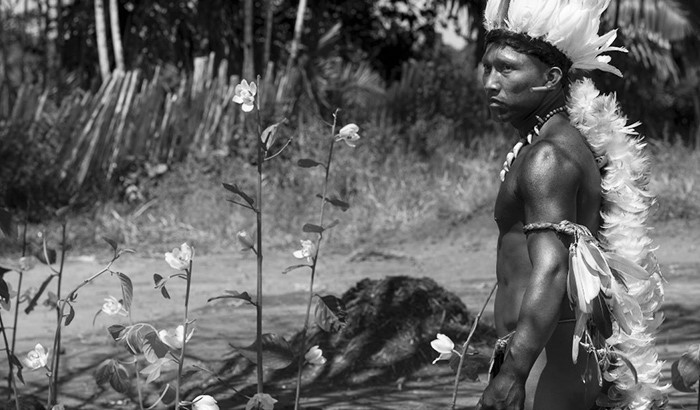

Banisteriopsis Caapi
A few years earlier, in 1851, the British explorer Richard Spruce had discovered the Tukanoan tribes in Amazonian Brazil using a liana called caapi to induce intoxication, but his observations were not published until later. One of Spruce’s greatest contributions was his precise identification of the source of caapi as a new species of the Malpighiaceae. The species was described and called Banisteria Caapi. Recent botanical studies have shown that this concept cannot be accommodated in the genus Banisteria and it has been transferred to the allied genus Banisteriopsis. The correct name now is, accordingly, Banisteriopsis Caapi.
Spruce wrote of the caapi-drinking ceremony: “I had gone with the full intention of experimenting the caapi myself, but I had scarcely dispatched one cup of the nauseous beverage, which is but half the dose, when the ruler of the feast… came up with a woman bearing a large calabash of caxiri (mandioca beer), of which I must needs take a copious draught, and as I know the mode of its preparation, it was gulped down with secret loathing. Scarcely had I accomplished this feat, when a large cigar 2 feet long and as thick as the wrist, was put lighted into my hand, and etiquette demanded that I should take a few whiffs of it — I, who had never in my life smoked a cigar or a pipe of tobacco. Above all this, I must drink a large cup of palm-wine, and it will readily be understood that the effect of such a complex dose was a strong inclination to vomit, which was only overcome by lying down in a hammock and drinking a cup of coffee…”
Two years later, Spruce met with caapi amongst the Guahibo Indians of the upper Orinoco of Colombia and Venezuela. Here the natives “not only drink an infusion but also chew the dried stem…”
Many of our common medicines were first discovered from plants, later synthesized to make them more available. But in the Amazon, for example, there are 80,000 species of plants. To give you some measuring rod, New England has 1,900 only. 80,000 species! If chemists are going to try to get material of 80,000 species and analyze them, and then give them to pharmacologists, this job will never be done, never be finished. What we should do is concentrate on those plants that people in these societies have found have some effect on the human body. — Richard Evans Schultes

Watch this video on YouTube
Richard Schultes – The Father of Modern Ethnobotany, Interview December 15, 1990, Cambridge, Massachusetts
In the century that followed Spruce’s remarkable work, many explorers, travelers, anthropologists and botanists referred to ayahuasca, caapi or yagé, usually without details and often without botanical identification beyond the statement that the drug was prepared from a forest liana. In the years that followed the early work, the area of use of Banisteriopsis Caapi was shown to extend to the Amazon of Peru and Bolivia and even to the rain-forested Pacific coastal region of Colombia and Ecuador. Several other species of the genus with the same use were likewise reported from the western Amazon.
Of outstanding interest was the work in 1922 of Rusby and White in Bolivia and the publication by Morton in 1931 of notes made by the botanical collector Guillermo Klug in the Colombian Putumayo, including the discovery of Banisteriopsis inebrians as a source of the yagé drink. Similarly, the work of Varanof and Juzepczuk in the Colombian Caqueta in 1925-26 added important information to the whole problem. The most recent field work of Garcia Barriga, added to my own researches and those of my students Bristol and Pinkley, have furthered appreciably our knowledge, but there still remains much to do before a thorough understanding of the total picture of the malpighiaceous narcotics is gained. An outstandingly complete ethnobotanical summary of the use of Banisteriopsis as a narcotic has recently been published by Friedberg. Cuatrecasas’s monographic study of the Malpighiaceae of Colombia now provides the firm taxonomic basis for clarification of numerous ethnobotanical problems.
Schultes [in 1941] would enter the northwest Amazon, an area that had remained largely unknown to the outside world, isolated by the Andes to the west and dense jungles and impassable rapids on all other sides. The region is drained by four major Amazonian tributaries – the Putumayo, Caquetá, Apaporis, and Vaupes. Some of these rivers are “whitewater” rivers rich in Andean sentiments, and others are “blackwater” rivers, whose dark and murky tea-like appearance is caused mostly by tannins from decaying leaves. Each river type created its own unique ecosystem, and Schultes traveled and collected in all of them.
Through his travels on these rivers, Schultes had the honor and pleasure (in his words) of working closely with over a dozen Amerindian tribes: the Tukano, Taiwano, Kubeo, Barasana and Makuna of the Tukanoan language group; the Bora, Mirana, Muinane and Witoto of the Witotoan group; the Matapi, Tanimuka and Yukuna of the Arawakan group; the Karijona of the Carib group; the Inga of the Quechuan group; and the Kamentsá and Cofan of seemingly isolated linguistic stock. Though he spoke glowingly of all the groups he encountered, the Cofan, Witoto and Yukunas were particular favorites.
STORY: Colombia: Stunning Indigenous Rock Art from Amazonia
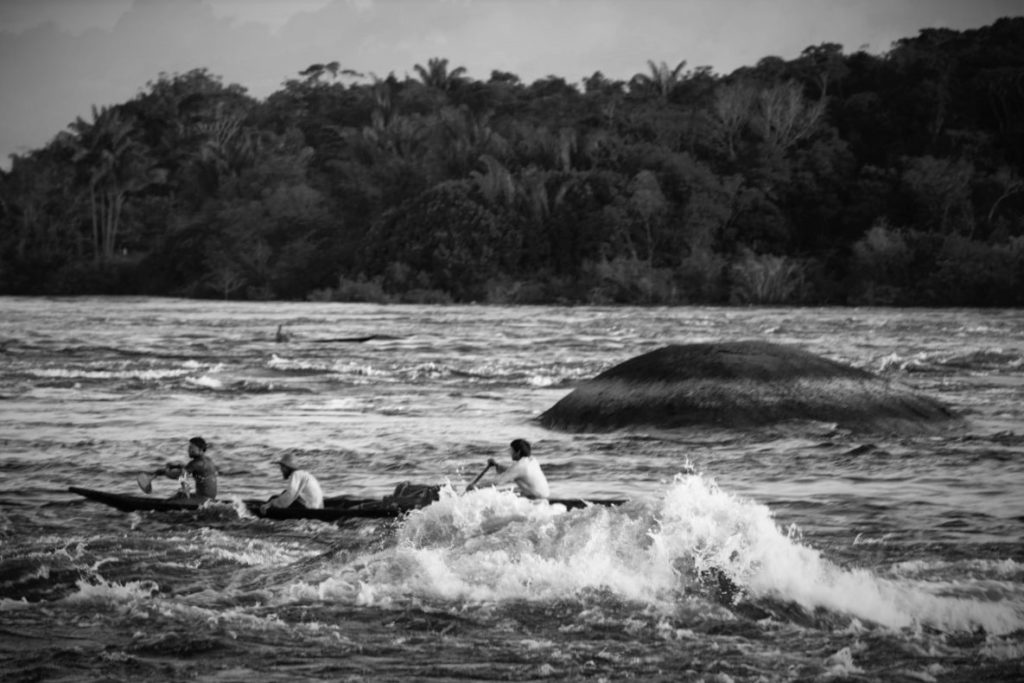

Serious complications, however, arose early in attempts correctly to identify ayahuasca, caapi and yagé. In 1890, a missionary among the Jivaros published an article in which he confused the narcotic tree-species of Brugmansia with the malpighiaceous hallucinogen – a confusion that entered pharmacological and chemical literature and has persisted there.
The presumption, arising from misinterpretation of Spruce’s field notes, that, while ayahuasca and caapi were derived from Banisteriopsis, yagé was prepared from the apocynaceous Prestonia amazonica (see below under P. amazonica). Although this error has been more or less discredited, the literature abounds with “identifications” of yagé – and even of ayahuasca and caapi – as Prestonia. It has confused the ethnobotanical, chemical and pharmacological study of this drug to an extraordinary degree. In 1957, the chemists Hochstein and Paradies analyzed “ayahuasca” from Peru, calling it Banisteriopsis Caapi, and, from the same region, yagé, which they attributed to Prestonia amazonica.
They stated that the natives of the Río Napo area “commonly consume a mixed extract of the B. Caapi and P. amazonica leaves in the belief that the latter suppress the more unpleasant hallucinations associated with the pure B. Caapi extracts.” The identification of “Prestonia amazonica” was made on an aqueous extract of the leaves through the use of the vernacular name yagé which, in much of the literature, is actually so identified. What makes this particular instance unusually sensitive was the report of the discovery in “Prestonia amazonica” of N,N-dimethyltryptamine, a compound unknown in the Apocynaceae. In the light of recent studies, it appears possible that the aqueous extract of leaves called yagé was, in reality, Banisteriopsis Rusbyana or Psychotria psychotriaefolia.
The Tree of the Evil Eagle of “borrachero”: The strongest of the [Sibundoy Valley of Colombia area] medicines and the most favored hallucinogen of Kamentsa payés (shamans) for prayer and divination was borrachero culebra (“drunken snake”). According to local shamans, the effects were so deeply transformative that a dose could put a person to sleep for four days. The plant had a variety of other uses as well: the leaves were used to make an infusion, and when heated in water, the leaves and flowers were used to relieve tumor, swollen joints, and persistent chills and fevers. Borrachero culebra was extremely rare, found only in the gardens of Salvador Chindoy and a handful of other shamans. Schultes planted it in the garden of the church and around the seminary, a clear manifestation of his droll sense of humor.
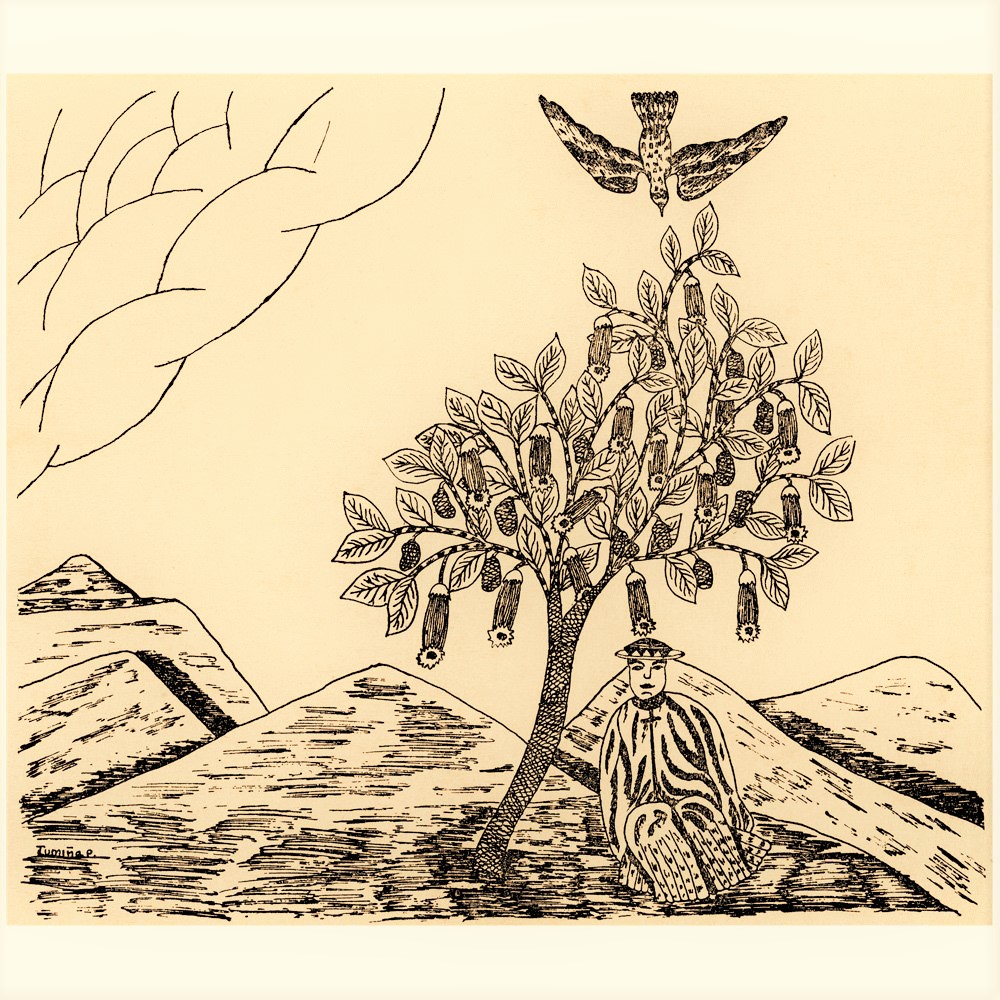

Still other confusions have entered the picture of the identity of the malpighiaceous narcotics of South America. Yagé has been identified as a species of Aristolochia on the basis of mis-identification of a wood specimen. On what was possibly a mixture in herbarium material, Niedenzu suggested that ayahuasca in Ecuador and Peru ought to be considered the malpighiaceous Mascagnia psilophylla var. antifebrilis as well as Banisteriopsis Caapi and B. quitensis – thus introducing an additional genus, for which none of the extensive field observations offers support, into the picture.
From an evaluation of field work from all sources, it is now clear that the two main sources of ayahuasca, caapi and yagé in the Amazon basin, natema in Ecuador, pinde along the Pacific coast of Colombia, are the barks of Banisteriopsis Caapi and B. inebrians, and that in certain parts of the westernmost Amazon the leaves of a third species, B. Rusbyana (i.e. Diplopterys cabrerana), may occasionally be added to fortify the drink.
A great amount of ethnobotanical work remains to be done in identifying the plants which certain Amazonian tribes use as additives with the basic Banisteriopsis ingredient. These additives may be very localized – even to one witch-doctor – or they may be widely employed. In many instances, there is reason to believe that their use alters or strengthens the effects that the Banisteriopsis alone would cause. The Sionas of Colombia add what is probably Brugmansia suaveolens to Banisteriopsis in making yagé, and their neighbors, the Inganos, are said to value Alternanthera Lehmannii as an admixture. I found that Makuna medicine-men in eastern Colombia occasionally add a few crushed leaves of the apocynaceous Malouetia Tamaquarina. Tobacco is stated sometimes to be added. A most interesting anthropological report has recently enumerated five lianas, the barks of which are employed with Banisteriopsis Caapi by the Tukanos of the Brazilian part of the Rio Vaupes; but, unfortunately, the plants are still identified only by native names; the admixture said to fortify the drink most strongly – a vine with thickened nodes and known in Tukano as kuri-kaxpi-dí-may, I believe, possibly represent Gnetum nodosum, a very abundant element of the riverside vegetation.
Appreciable differences exist in the manner of preparing the malpighiaeceous narcotics – differences from area to area and even occasionally from tribe to tribe. In Ecuador, Colombia and Peru, near the eastern Andean slopes, the drink is made by long boiling of the ingredients; farther to the east, it is made simply by soaking and squeezing the freshly rasped bark in cold water and straining the liquid.
Seeking Arrow Poisons (Curare): The Sucumbíos River drained the territory of the Cofán, a tribe that had remained largely isolated from the outside world in the 1940s with the exception of a few missionaries and rubber traders. At the time of the Spanish Conquest, the Cofán were a numerous tribe that successfully resisted [the Inca Ruler] Huayna Capac and the Inca Empire. By the 17th century, disease and enslavement had reduced their population to some twenty thousand individuals. Several waves of epidemics introduced by missionaries in the 20th century further reduced their numbers to fewer than a thousand at the time of Schultes’ visit [today they are about 1,000 strong].
Schultes found that the Cofán had more shamans relative to population size than any other tribe in the northwest Amazonia. He described them as “deeply knowledgeable men with unusual intelligence and imposing personality.” By reputation, they were experts in manipulating spiritual forces to prescribe cures for illnesses and even solve socio-political problems. Some Cofán shamans believed that, when in a plant-induced trance, they could turn themselves into jaguars and roam the rainforest at night.
STORY: Ayahuasca: Fake Shamans and The Divine Vine of Immortality
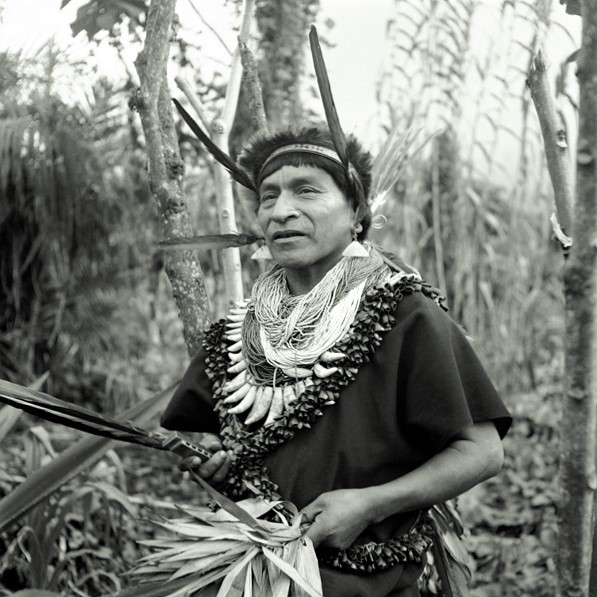

To this day, the natives of the north-west Amazon in Brazil and Colombia use the Banisteriopsis drink for prophetic and divinatory purposes and also to fortify the bravery of male adolescents about to undergo the severely painful yurupari ceremony for initiation into manhood. The narcosis among these peoples, with whom I have taken caapi on many occasions, is usually pleasant, characterized by visual hallucinations in color, which initially is very often a shade of blue or purple. In excessive doses, it is said to bring on frighteningly nightmarish visions and a feeling of extremely reckless abandon, although consciousness is not lost nor is use of the limbs unduly affected.
One encounters great difficulty in describing a Banisteriopsis intoxication for many reasons. First: the effects of harmine, the alkaloid apparently of prime psychoactive importance, is known to react variably from person to person. Second: the methods of preparing ayahuasca, caapi or yagé differ from area to area. Third: sundry admixtures may be employed that alter the effects of the principal ingredient of the drink.
My own experiences from participation in many Amazonian Banisteriopsis-rituals might be summarized by saying that the intoxication began with a feeling of giddiness and nervousness, soon followed by nausea, occasional vomiting and profuse perspiration. Occasionally, the vision was disturbed by flashes of light and, upon closing the eyes, a bluish haze sometimes appeared. A period of abnormal lassitude then set in during which colors increased in intensity. Sooner or later a deep sleep interrupted by dream-like sequences began. The only uncomfortable after-effect noted was intestinal upset and diarrhea on the following day. At no time was movement of the limbs adversely affected. In fact, among many Amazonian Indians, dancing forms part of the caapi-ritual.
Chen and Chen offered a good summary of Banisteriopsis hallucinations: “The most outstanding feature of caapi seems to be its ability to produce visual hallucinations and dreams in men. The Caucasians who took this preparation apparently confirmed the Indians’ claims. Thus, Villavicencio experienced an aerial voyage, in which he saw the most beautiful sights, and Spruce quoted a Brazilian friend as saying that once, when he took a full dose of caapi, he saw all the marvels that he had read about in the Arabian Nights pass rapidly before his eyes as a panorama; the final sensations and sights were horrible, as usual. Cardenas made seven observations on men, including himself, with the decoction in various doses. All the subjects appeared to have optical illusions of different degrees. No excitement was recorded in any case.”
Cultures can create different realities: Take ayahuasca, the most powerful psychoactive preparation of the shaman’s repertoire. What makes ayahuasca fascinating is not the sheer pharmacological potential of this preparation, but the elaboration of it. It’s made really of two different sources: on the one hand, this woody liana which has in it a series of beta-carbolines, harmine, harmaline, mildly hallucinogenic — to take the vine alone is rather to have sort of blue hazy smoke drift across your consciousness — but it’s mixed with the leaves of a shrub in the coffee family called Psychotria viridis. This plant had in it some very powerful tryptamines, very close to brain serotonin, dimethyltryptamine, 5-methoxydimethyltryptamine. If you’ve ever seen the Yanomami blowing that snuff up their noses, that substance they make from a different set of species also contains methoxydimethyltryptamine. To have that powder blown up your nose is rather like being shot out of a rifle barrel lined with baroque paintings and landing on a sea of electricity. It doesn’t create the distortion of reality; it creates the dissolution of reality. — Wade Davis
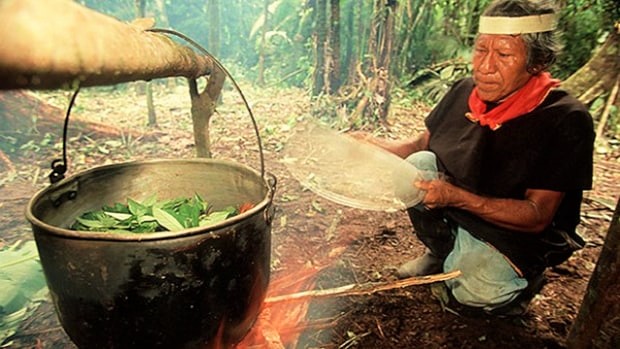

The earliest sophisticated phytochemical work on “yagé” was apparently that of the Colombian, Fischer-Cardenas, who, in 1923, isolated alkaloidal crystals which he called telepathine, a name which an earlier Colombian, Zerda-Bayon, had coined for a presumed alkaloid as early as 1905. Fischer-Cardenas, without voucher botanical material, presumed that he was analyzing a species of Atristolochia.
Further chemical and pharmacological studies were undertaken without much real progress, until Perrot and Raymond-Hamet, in 1927, first isolated an alkaloid in pure condition, conserving for it the name telepathine. A year later, Lewin investigated Banisteriopsis Caapi subsequently publishing a monograph on this “magic drug” and, what is truly remarkable, making “… a film of the action of the drug in three patients…” undoubtedly “the first documentation of the action of monoamine-oxidase inhibitors.” Lewin isolated an alkaloid which he called banisterine. Elger and Wolfe and Rumpf contributed by identifying the alkaloid in botanically authenticated material as harmine, known for many years and from the zygophyllaceous Peganum Harmala. Shortly thereafter, in 1939, the work of Chen and Chen confirmed the presence of harmine in stem, root and leaf material of botanically authenticated Banisteriopsis Caapi. Harmaline and tetrohydroharmine have likewise been isolated from Banisteriopsis Caapi.
Yage is space time travel. The room seems to shake and vibrate with motion. The blood and substance of many races, Negro, Polynesian, Mountain Mongol, Desert Nomad, Polygot Near East, Indian – new races as yet unconceived and unborn, combinations not yet realized passes through your body. Migrations. Incredible journeys through deserts and jungles and mountains (stasis and death in closed mountain valleys where plants sprout out of the Rock and vast crustaceans hatch inside and break the shell of the body), across the Pacific in an outrigger canoe to Easter Island. The Composite City where all human potentials are spread out in a vast silent market. — William S. Burroughs in a letter to Allen Ginsberg
STORY: William S. Burroughs – Commissioner of Literary Addictions
In 1953, botanically determined material of Banisteriopsis inebrians was analyzed with the resulting discovery of harmine in the stems, but harmaline and tetrahydroharmine were not found.
All the alkaloids isolated from Banisteriopsis Caapi and B. inebrians have a beta-carboline skeleton with varying degrees of hydrogenation in the pyridine ring.
While Banisteriopsis is normally employed as a beverage, there is evidence that in the north-westernmost Amazon it may be used as snuff as well: harmine, harmaline and tetrohydroharmine have been reported from snuff powders said to have been prepared from a vine which, according to reports, was also the source of an intoxicating rink in the Rio Negro basin of Brazil. Botanically identifiable material, unfortunately, is lacking.
A recent and unusual chemical analysis carried out on stem material of the type plant of Banisteriopsis Caapi, collected by Spruce in 1852, disclosed he presence still of harmine. This material, suffering considerable damage from rot when it was abandoned in shipment in the Amazon jungle, has been stored for more than a century at Kew. Gas chromatography – mass spectrometry showed that the alkaloid content consisted exclusively of harmine. Whether the stems originally contained harmaline and tetrohydroharmine or not cannot be stated, but it is more likely that, with time, they have been transformed into the chemically more stable aromatic beta-carboline, harmine. It is truly remarkable that botanical material collected from a type plant for chemical analysis 115 years ago has finally been subjected to examination by modern analytical microtechniques.
It was Poisson who, in 1965, reported in the leaves of Banisteriopsis Rusbyana, the presence, in relatively high amounts, of N,N-dimethyltryptamine, a discovery corroborated by several later investigators. This species surprisingly did not contain the beta-carboline alkaloids.
As pointed out above, this plant is one of the important admixtures with Banisteriopsis Caapi and B. inebrians in preparing the narcotic drink in the westernmost Amazon. What is even more interesting is that this is the same indole derivative found in a number of hallucinogenic snuffs used in South America.
To my knowledge, leaves of Psychotria psychotriaefolia and Banisteriopsis Rusbyana are never used alone, notwithstanding their significant content of N,N-dimethyltryptamine. Since it is suspected that this hallucinogenic compound would have little if any effect taken orally, the way in which these two plants act as admixtures with harmine-containing species is still not clear. That they do alter or even intensify the intoxication is not questioned by any field observation, and, even though most of the South American narcotic preparations containing N,N-dimethyltryptamine are taken as snuffs, the natives employ at least one other — Mimosa hostilis — in liquid form as a drink.
It is obvious that there remains much field and laboratory investigation — preferably well integrated — before we truly understand the drugs of the ayahuasca-caapi-yagé complex, notwithstanding the fact that we have had a century in which to carry out such studies. What is disconcerting, indeed, is that time may be running out for pristine investigations of this kind, as tribe after tribe becomes civilized or disappears.
“In the morning [after William S. Burrough’s first traumatic experience on yagé] he attempted to compare notes with Schultes, who by this time in his career had taken yagé on more than twenty occasions. “I never get sick,” Schultes told him. Burroughs mentioned that at one point he felt himself change into a black woman, then a black man, then a man and a woman at the same time, with everything writhing as in a Van Gogh painting. He had achieved pure bisexuality, becoming a man or a woman at will, awash with wild convulsions of lust. “I only get colors, no visions,” Schultes replied.” — Wade Davis, One River (1996)
Tetrapteris methystica
Several writers – notably Spruce and the German anthropologist Koch-Grünberg – mention more than one “kind” of caapi in the Vaupes basin. It was my good fortune in 1948 to be able to witness the preparation of, and to take a narcotic drink along an affluent of the Rio Tikie in north-westernmost Brazil. Specimens taken from a flowering vine, from the bark of which a coldwater infusion was made without the admixture of any other plants, were found to represent an undescribed species of a malpighiaceous genus closely allied to Banisteriopsis – Tetrapteris methystica.
The beverage prepared from Tetrapteris methystica was a yellowish hue, quite unlike the coffee-brown color characteristic of all preparations of Banisteriopsis Caapi which I have seen.
A small amount of stem material for chemical study that I gathered from the wild vine from which the type material came was lost in the overturning of my canoe. Consequently, nothing is known chemically of this kind of caapi. That it is highly intoxicating, with effects very like those induced by Banisteriopsis, I can vouch from self-experimentation.
An important point in this connection is worth considering. Tetrapteris methystica may represent the second “kind” of caapi mentioned by Spruce and Koch-Grünberg, and it might be that the epithet caapi-pinima (” painted caapi “) alludes not to the painted leaves but to the unusual yellowish hue of the drink prepared from it.
Richard Evans Schultes (January 12, 1915 – April 10, 2001) may be considered the father of modern ethnobotany for his studies of indigenous peoples’ of the Americas uses of plants, including especially entheogenic or hallucinogenic plants (particularly in Mexico and the Amazon). Also noted for his lifelong collaborations with chemists, and for his charismatic influence as an educator at Harvard University on a number of students (Wade Davis, Mark Plotkin) and colleagues who went on to write popular books and assume influential positions in museums, botanical gardens, and popular culture.
Updated 22 March 2021









Pingback: Terence McKenna: On Shamanic Schizophrenia and Cultural Healing | WilderUtopia.com
Pingback: Field Guide to Adventures in Tropical Botany | WilderUtopia.com
Pingback: Kogi People’s Lesson From the Heart of the Mountain
Pingback: Bolivia: Global Warming Endangers Kallawaya Healers